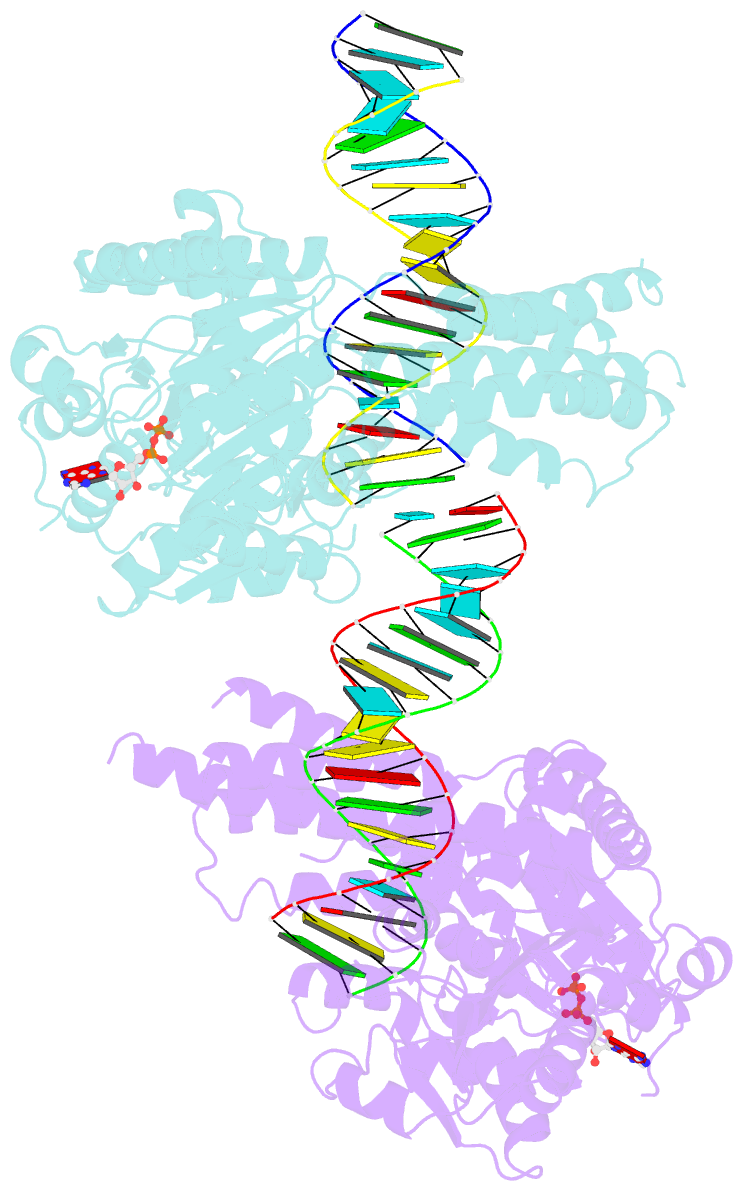Summary information and primary citation
- PDB-id
- 4a36; SNAP-derived features in text and JSON formats;
DNAproDB
- Class
- RNA binding protein-RNA
- Method
- X-ray (3.7 Å)
- Summary
- Structure of duck rig-i helicase domain bound to 19-mer dsrna and atp transition state analogue
- Reference
- Kowalinski E, Lunardi T, Mccarthy AA, Louber J, Brunel J, Grigorov B, Gerlier D, Cusack S (2011): "Structural Basis for the Activation of Innate Immune Pattern Recognition Receptor Rig-I by Viral RNA." Cell(Cambridge,Mass.), 147, 423. doi: 10.1016/J.CELL.2011.09.039.
- Abstract
- RIG-I is a key innate immune pattern-recognition receptor that triggers interferon expression upon detection of intracellular 5'triphosphate double-stranded RNA (5'ppp-dsRNA) of viral origin. RIG-I comprises N-terminal caspase activation and recruitment domains (CARDs), a DECH helicase, and a C-terminal domain (CTD). We present crystal structures of the ligand-free, autorepressed, and RNA-bound, activated states of RIG-I. Inactive RIG-I has an open conformation with the CARDs sequestered by a helical domain inserted between the two helicase moieties. ATP and dsRNA binding induce a major rearrangement to a closed conformation in which the helicase and CTD bind the blunt end 5'ppp-dsRNA with perfect complementarity but incompatibly with continued CARD binding. We propose that after initial binding of 5'ppp-dsRNA to the flexibly linked CTD, co-operative tight binding of ATP and RNA to the helicase domain liberates the CARDs for downstream signaling. These findings significantly advance our molecular understanding of the activation of innate immune signaling helicases.





